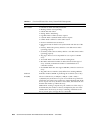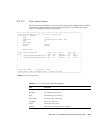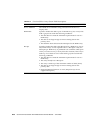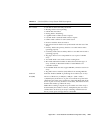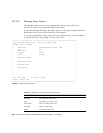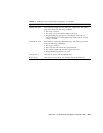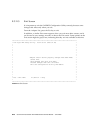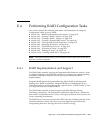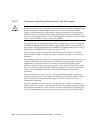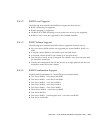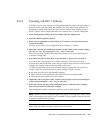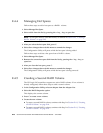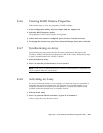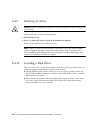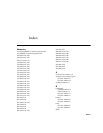
E-42 Sun Fire X4100 and Sun Fire X4200 Servers Service Manual • June 2006
E.4.1.1 Automatic Data Resynchronization and Hot Spares
Caution – Possible data loss: If you insert a HDD that has been configured with a
RAID volume into a server that did not previously have its HDDs configured with
RAID volumes, the existing HDD(s) in the server will be converted to RAID
volumes during automatic synchronization and any existing data on the existing
HDD(s) in the server will be erased. Before permanently removing a HDD that is
part of an active RAID volume, use the LSI Configuration Utility to delete the RAID
volume from the HDD to avoid causing this problem.
The SCSI parameters, including RAID volumes configuration, are set up using the
LSI BIOS configuration utility accessible by pressing the CTRL+C keys during the
boot process. The LSI RAID firmware and BIOS is OS-independent and you set up
RAID while in MPTBIOS POST, before booting to an OS.
The parameters are saved in both the NVRAM and the disk drives. The RAID
firmware needs 64 MB of unused disk space at the end of each drive to store the
metadata.
The metadata stored on the disk drives contains sufficient information to restore and
reactivate the RAID volumes in case the NVRAM is lost (for example, when the
motherboard is replaced). However, if removed, the disk drives must first be
labelled to make sure that they are placed back in the same disk bays from which
they were removed when reinstalled. When the system is powered on, the RAID
volumes are automatically activated and resynchronization is automatically
performed.
One of the disk drives can be set up as a hot-spare disk if a RAID 1 (mirroring)
volume is already set up. If one of the two disk drives used in the RAID 1 volume
fails, the hot-spare drive automatically replaces it in the volume and resync is
immediately performed.
It must be noted that, until the resync is completed, the system is vulnerable to a
failure of the now “primary” disk (the disk left from the original mirrored volume)
since full data redundancy is not yet achieved. When the bad disk is replaced, the
new disk automatically becomes the new hot-spare disk for the mirrored volume.



